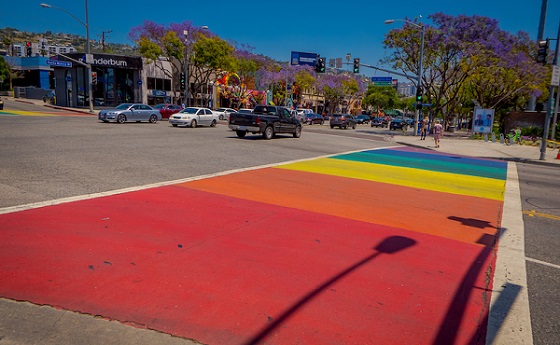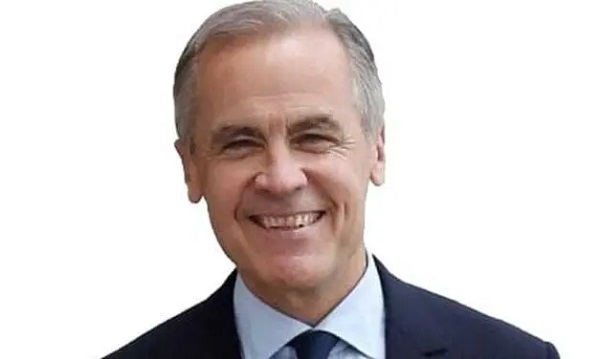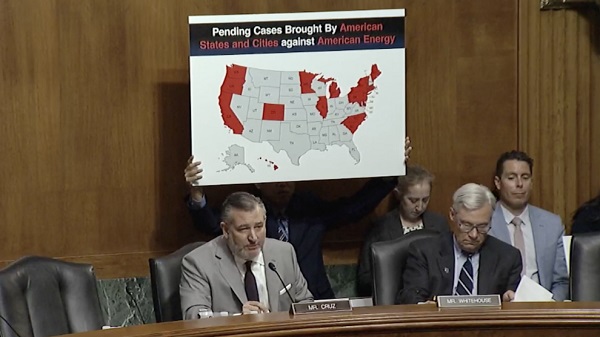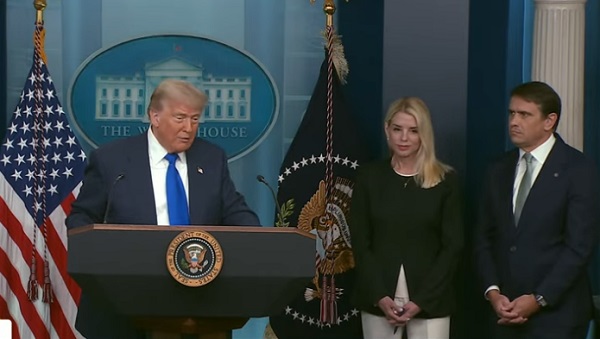Alberta
Update 16: Northwest Alberta wildfires (June 6 at 6 p.m.)

June 06, 2019
Weather conditions favourable for firefighters.
Wet, cooler weather has contributed to conditions that make it easier for fighting wildfires across the province. Rain continues to fall in many areas of Alberta while the High Level area experiences cool temperatures.
Approximately 4,800 evacuees remain displaced. Steen River and Trout Lake evacuees are now eligible for evacuation payments.
The following communities remain on evacuation alert:
- Keg River, Carcajou and all residents from the northern border of the County of Northern Lights to Township Road 922 (Notikewin Road)
- Hamlet of Sandy Lake
- Town of Slave Lake
- MD of Lesser Slave Lake, including Old Smith Highway, Mitsue, Poplar Lane, Fawcett Lake, Eben Road and Bayer Road
- Peerless Lake area of Peerless Trout First Nation
- Town of Manning and some surrounding areas
- Mackenzie County: everyone north and south of the Peace River from Township Road 1030 north to Township Road 1110, west of Range Road 120 to Highway 35 south and southeast of High Level, and east of Range Road 180 (Blue Hills Road)
Mandatory evacuations remain in place for:
- Paddle Prairie Metis Settlement
- Some areas of Mackenzie County: west of Blues Creek, north of Highway 697, west of Blue Hills Road (RR 180) and north of Township Road 1030 and La Crete Ferry Campground to the Peace River.
- Steen River
- The Trout Lake area of Peerless Trout First Nation
- Bigstone Cree Nation
- Wabasca No. 166
- Parts of the MD of Opportunity No. 17
- Hamlet of Wabasca – Desmarais
- Hamlet of Sandy Lake
- Chipewyan Lake Village
Current situation:
- Chuckegg Creek wildfire, southwest of High Level, is about 275,985 hectares.
- Jackpot Creek wildfire, approximately 11 kilometres north of Lutose, is about 28,100 hectares.
- McMillan Wildfire Complex, southwest of Bigstone Cree Nation, is more than 248,000 hectares.
- Battle Wildfire Complex in Peace River is about 56,200 hectares.
- There are more than 2,100 wildland and structural firefighters and staff, approximately 223 helicopters and 28 air tankers and heavy equipment on these fires.
- Check Alberta Emergency Alerts for more detailed and frequently updated information.
- People driving in fire-affected areas should carry enough fuel, as it may not be readily available.
Visit emergency.alberta.ca for detailed and frequently updated information.
Air quality
- Smoke is causing poor air quality and reducing visibility in parts of the province.
- Much of northwestern Alberta is under a special air quality statement.
- Individuals may experience symptoms, such as increased coughing, throat irritation, headaches or shortness of breath. Children, seniors and those with cardiovascular or lung disease, such as asthma, are especially at risk.
- If you experience breathing difficulties, find an indoor place that’s cool and ventilated.
- Alberta Wildfire recommends checking FireSmoke.ca to find out where the smoke is coming from.
Financial supports
- Evacuees should check alberta.ca/emergency for updates on evacuation payment eligibility.
- Evacuees in need of financial assistance for immediate needs can apply for an Income Support program emergency needs allowance. This benefit may cover your accommodation, clothing and other urgent needs. Please call 1-877-644-9992 for more information.
- You may qualify for the evacuation payment if you:
- were living, working or vacationing in the affected area
- were forced to leave due to an evacuation order
- paid for most of your costs to evacuate
- were forced to leave your residence (primary, working or vacationing) due to a mandatory evacuation order – current communities include:
- High Level
- Paddle Prairie Metis Settlement
- Bushe River
- Chateh
- Meander River
- Wabasca-Desmarais
- Bigstone Cree Nation 166 A, B, C and D
- Sandy Lake
- Chipewyan Lake Village
- Keg River
- Carcajou
- Northern border of the County of Northern Lights to Township Road 922 (Notikewin Road)
- Steen River
- Trout Lake
- Albertans who qualify will receive $1,250 and $500 for each dependent child under 18 living in the same home when the evacuation order was given.
- Application methods:
- Apply online through the MyAlberta Evacuation Payment application using a smart-phone, device or desktop. Interac e-transfers may take 24 hours to process.
- If you’re in the Edmonton area and from an eligible community, please visit the Edmonton Expo Centre, 7515 118 Ave before 9 p.m. on Thursday, June 6 or between 8:30 a.m. and noon on Friday, June 7.
- Parking is free for evacuees. Let the parking attendant know the purpose of your visit.
- You can also apply in-person at Calling Lake Community Complex, Central Drive and 1 Street before 8 p.m. on Thursday, June 6 if you’re from:
- Wabasca-Desmarais
- Carcajou
- Sandy Lake
- Chipewyan Lake Village
- Keg River
- Bigstone Cree Nation 166 A, B, C and D
- Northern border of the County of Northern Lights to Township Road 922 (Notikewin Road)
- If you’re not in the Edmonton or Calling Lake areas, contact 310-4455 to find the nearest payment distribution centre.
- Photo identification
- Proof of residence or presence in the community
- Identification for dependent children if claiming for them
- If you are visiting a payment distribution centre, please bring:
- More than 10,300 individuals have received evacuee support, and more than $10.4 million has been distributed.
Reception and call centres
- All evacuees should register with an evacuation reception centre, even if you’ve found alternate accommodations.
- Some reception centres have been demobilized. This means evacuees are able to contact the centres by phone. If there is a need, staff will assist them on an individual basis:
- Grande Prairie – 780-567-5587
- Reception centres are open at:
- Peace River Misery Mountain Ski Hill (10408 89 Street)
- Calling Lake Recreation Centre (2870 Central Drive)
- Back Lakes Arena (249 Red Earth)
- Evacuation reception centre hours can be found at emergency.alberta.ca.
- The Alberta Government’s call centre will be open from 8 a.m. to 8 p.m. until Friday, June 7 at 310-4455.
Highway updates
- To stay informed on all road closures due to the wildfires, visit 511.Alberta.ca or download the mobile app.
Insurance information
- Most home and tenant insurance policies provide coverage for living expenses during an evacuation.
- Evacuees should retain all of their receipts for food, accommodation and other related expenses to provide to their insurer.
- Albertans can contact the Insurance Bureau of Canada at 1-844-227-5422 or by email at [email protected]. Information about insurance coverage is available online at ibc.ca/ab/disaster/alberta-wildfire.
Justice and legal matters
- High Level Court matters will resume in High Level on Monday, June 10 at 8:15 a.m.
- Community Corrections and Release will resume operations out of High Level at 8:15 a.m. on Friday, June 7.
- Chateh Court matters will be heard in High Level Court until further notice. Please contact the High Level Court at 780-926-3715 for inquiries.
- Fort Vermilion Court matters will resume immediately, as scheduled. Please call 780-926-3715 for inquiries.
- Wabasca Desmarais matters will continue to be held in High Prairie until further notice. Please contact the High Prairie Court at 780-523-6600 regarding any matters scheduled.
- If you have an appointment with a probation officer in an evacuated area, report to the community corrections office nearest you. Please call 780-427-3109 (to call toll-free, first dial 310-0000) for information.
- If you are an intermittent server in an evacuated area, call the Peace River Correctional Centre at 780-624-5480 (to call toll-free, first dial 310-0000).
Education
- The schools of Fort Vermilion School Division will remain closed for the remainder of the school year. Students wishing to write a diploma exam, Grade 6 or Grade 9 provincial achievement tests should make arrangements with the Fort Vermilion School Division. For further information visit: fvsd.ab.ca.
- School officials in fire-impacted areas will address the impacts of disruption on the academic program and school year. Students or their guardians should watch for online or direct communications from local school authorities about specific changes.
Provincial park closures
- Lesser Slave Lake Provincial Park trails and day-use areas, including the Boreal Centre for Bird Conservation, are open. Campgrounds remain closed.
- Twin Lakes Provincial Recreation Area, Moose Lake Provincial Park and Notikewin Provincial Park are closed.
- Calling Lake Provincial Park campground is closed to accommodate evacuees from the MD of Opportunity. Any campground reservations will be refunded.
Boil water advisory
- A boil water advisory is in place for Meander River (Dene Tha’ First Nation).
Health
- Mental health support is available by calling Alberta’s 24-hour help line at 1-877-303-2642, the Addiction Helpline at 1-866-332-2322, or Health Link at 811.
- Alberta Health Services is providing support to the reception centres. These supports include addiction and mental health, Indigenous health liaisons, nursing, emergency medical services, public health and home care.
- The Northwest Health Centre in High Level is open, with all emergency, laboratory, X-ray, mental health and community health departments open.
- Alberta Health Services will be providing enhanced addiction and mental health services to help residents in High Level following the evacuation.
- New, temporary walk-in services for individuals experiencing addiction and mental health concerns are available seven days a week from 11 a.m. to 7 p.m. at the Mental Health Clinic at Northwest Health Centre in High Level. Scheduled visits with new and existing clients will resume on Monday, June 10, from 8 a.m. to 4:30 p.m. For more information, please call the clinic directly at 780-841-3229.
- Alberta Health Services has relocated acute patients and continuing care residents from La Crete and Fort Vermilion to health facilities in Edmonton and surrounding communities.
- The emergency department at St. Theresa General Hospital in Fort Vermilion remains open.
Pets and livestock
- High Level animal control has collected household pets that have been left behind. For questions regarding your pets, please call 780-926-2201.
- For evacuees in the Wabasca area, please fill out an online form on the Alberta Animal Disaster Response Facebook group, or text 403-869-4964 and provide your name, contact number, number of animals missing, where they were last seen, and a brief description of your pet.
- The County of Northern Lights will allow residents to enter property to look after livestock between 7 a.m. and 10 p.m. Residents must first go to the county office to register for the temporary access pass.
Electricity and natural gas billing
- High Level and area residential, farm, irrigation and small commercial electricity and natural gas customers affected by the evacuation will not be billed for the period covered by the order.
Donations and volunteers
- High Level is not accepting donations or volunteers at this time.
- The Town of Slave Lake has set up an online form for offers.
- Check the Mackenzie County Facebook page for an up-to-date list of donations needed and drop-off locations.
Canada Post
Mail service has been suspended in:
- High Level, Meander River, Chateh, Paddle Prairie, Keg River, Wabasca, Notikewin, Hotchkiss, Trout Lake
- High Level evacuees can pick up mail from the Slave Lake Post Office
- Chateh evacuees can pick up mail at the Fort Vermilion Post Office
- Meander River evacuees can pick up mail at the La Crete Post Office
Mail service has been restored in:
- Fort Vermilion, La Crete, Rainbow Lake, Zama City
If you require urgent access to critical items, such as medications and passports, please call 1-800-267-1177. You may be able to arrange for pick up at the Slave Lake Post Office (100 2 Street NE).
Mail will be held at the Edmonton depot until mail service resumes.
- Check the Canada Post website for updates.
Income Support, Alberta Supports and AISH
- Evacuees receiving the Assured Income for the Severely Handicapped or the Income Support program by cheque rather than electronic deposit can pick up their cheque at their nearest Alberta Supports Centres.
- If you are in La Crete, you can pick up your cheque at the local reception centre. If you receive your benefits via direct deposit, your payment will be deposited as usual.
- For information on child intervention and child care, call 1-800-638-0715.
- Persons with developmental disabilities, their families or contracted service providers can call the nearest Alberta Supports Centre for assistance.
- For additional information on social benefits, or to find a list of Alberta Supports Centres, call 1-877-644-9992 provincewide between 7:30 a.m. and 8 p.m., Monday to Friday.
- Employment insurance: evacuees can visit Service Canada online to apply at www.canada.ca/en/services/benefits/ei.html. Use code 4812014812201900.
Health card, driver’s licences, ID cards, birth certificate
- To get a replacement Health Care Insurance Card call 780-427-1432 or toll free at 310-0000 and then 780-427-1432 when prompted. Your Alberta Personal Health Card can be mailed to a temporary address.
- If driver’s licences, identification cards, and/or birth certificates were left behind during the evacuation, replacement cards and certificates can be ordered free of charge at a registry agent.
Public information
- You can call 310-4455 for more information.
Related information
Agriculture
Lacombe meat processor scores $1.2 million dollar provincial tax credit to help expansion

Alberta’s government continues to attract investment and grow the provincial economy.
The province’s inviting and tax-friendly business environment, and abundant agricultural resources, make it one of North America’s best places to do business. In addition, the Agri-Processing Investment Tax Credit helps attract investment that will further diversify Alberta’s agriculture industry.
Beretta Farms is the most recent company to qualify for the tax credit by expanding its existing facility with the potential to significantly increase production capacity. It invested more than $10.9 million in the project that is expected to increase the plant’s processing capacity from 29,583 to 44,688 head of cattle per year. Eleven new employees were hired after the expansion and the company plans to hire ten more. Through the Agri-Processing Investment Tax Credit, Alberta’s government has issued Beretta Farms a tax credit of $1,228,735.
“The Agri-Processing Investment Tax Credit is building on Alberta’s existing competitive advantages for agri-food companies and the primary producers that supply them. This facility expansion will allow Beretta Farms to increase production capacity, which means more Alberta beef across the country, and around the world.”
“This expansion by Beretta Farms is great news for Lacombe and central Alberta. It not only supports local job creation and economic growth but also strengthens Alberta’s global reputation for producing high-quality meat products. I’m proud to see our government supporting agricultural innovation and investment right here in our community.”
The tax credit provides a 12 per cent non-refundable, non-transferable tax credit when businesses invest $10 million or more in a project to build or expand a value-added agri-processing facility in Alberta. The program is open to any food manufacturers and bio processors that add value to commodities like grains or meat or turn agricultural byproducts into new consumer or industrial goods.
Beretta Farms’ facility in Lacombe is a federally registered, European Union-approved harvesting and meat processing facility specializing in the slaughter, processing, packaging and distribution of Canadian and United States cattle and bison meat products to 87 countries worldwide.
“Our recent plant expansion project at our facility in Lacombe has allowed us to increase our processing capacities and add more job opportunities in the central Alberta area. With the support and recognition from the Government of Alberta’s tax credit program, we feel we are in a better position to continue our success and have the confidence to grow our meat brands into the future.”
Alberta’s agri-processing sector is the second-largest manufacturing industry in the province and meat processing plays an important role in the sector, generating millions in annual economic impact and creating thousands of jobs. Alberta continues to be an attractive place for agricultural investment due to its agricultural resources, one of the lowest tax rates in North America, a business-friendly environment and a robust transportation network to connect with international markets.
Quick facts
- Since 2023, there are 16 applicants to the Agri-Processing Investment Tax Credit for projects worth about $1.6 billion total in new investment in Alberta’s agri-processing sector.
- To date, 13 projects have received conditional approval under the program.
- Each applicant must submit progress reports, then apply for a tax credit certificate when the project is complete.
- Beretta Farms has expanded the Lacombe facility by 10,000 square feet to include new warehousing, cooler space and an office building.
- This project has the potential to increase production capacity by 50 per cent, thereby facilitating entry into more European markets.
Related information
Alberta
Alberta Next: Alberta Pension Plan

From Premier Danielle Smith and Alberta.ca/Next
Let’s talk about an Alberta Pension Plan for a minute.
With our young Alberta workforce paying billions more into the CPP each year than our seniors get back in benefits, it’s time to ask whether we stay with the status quo or create our own Alberta Pension Plan that would guarantee as good or better benefits for seniors and lower premiums for workers.
I want to hear your perspective on this idea and please check out the video. Get the facts. Join the conversation.
Visit Alberta.ca/next
-

 armed forces1 day ago
armed forces1 day agoCanada’s Military Can’t Be Fixed With Cash Alone
-

 Alberta1 day ago
Alberta1 day agoCOVID mandates protester in Canada released on bail after over 2 years in jail
-

 International1 day ago
International1 day agoTrump transportation secretary tells governors to remove ‘rainbow crosswalks’
-

 Business1 day ago
Business1 day agoCanada’s loyalty to globalism is bleeding our economy dry
-

 Alberta1 day ago
Alberta1 day agoAlberta Next: Alberta Pension Plan
-

 Business1 day ago
Business1 day agoCarney’s spending makes Trudeau look like a cheapskate
-

 Crime2 days ago
Crime2 days agoProject Sleeping Giant: Inside the Chinese Mercantile Machine Linking Beijing’s Underground Banks and the Sinaloa Cartel
-

 Alberta2 days ago
Alberta2 days agoAlberta uncorks new rules for liquor and cannabis






